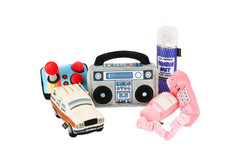Any pet owner knows that traveling with your dog is one of the most exhausting things you can do. However, some dogs are extremely comfortable taking car rides while others cannot take them. If your dog is one to suffer travel anxiety, then this article is for you.
To ease your dog’s travel anxiety, you have to pay close attention to your dog and be very patient with him/her. Reducing travel anxiety in dogs requires both the dog and its owner to work closely together. Be keen to note the things and situations that cause them anxiety and then slowly correct them. So, let’s get right to it.
1. Train him/her
Training your pet is no easy feat. To prepare your dog, you need to be very smart, gentle, and patient. Understand that just like a person, your dog cannot overcome their travel anxiety in a day. This is where you must commit and be willing to train your dog.
Before taking any significant steps, your dog needs to be able to get in a car calmly and stay. This part of the training will require you to get your dog into the car without scaring him. Start with your car stationary and off. It will allow your dog to approach it without being scared of the engine’s roar.

Once that part of the training is complete, you can move on to taking short trips. These can be trips to your grocery store, around the estate, to the vet, or the dog park.
Once he is used to short rides and can stay calm during them, you may now slowly transition him into longer trips and more extended periods inside the car.
2. Try calming dog products
A dog with travel anxiety may respond positively to natural and synthetic dog calming products. These help them feel secure in a moving car. Alternatively, you may decide to use natural supplements such as Cannabis on your pet. They also work just as well. But for this it is advised to read a cannabis buying guide first.
Research revealed pets respond positively to the smell of lavender. Cotton balls infused lavender in a plastic bag can be used to lace the air with the smell of lavender. Once it is open, it diffuses fast through the interior of the car. Try not to harm your dog using these products. Apply and use them as instructed.
You can try playing some music for him to identify which genre has a calming effect on your dog. It can’t harm to try.

3. Try to make the dog comfortable during trips.
Making your dog comfortable during the trip goes beyond locking him up in his carrier with a few treats and a toy. If your dog is small or medium-sized, use an appropriately sized travel crate or pet carrier for safety during the trip. The dog carrier should be spacious enough for your pet to lie down comfortably.
In addition to this, you need to plan your trip while considering your dog. Bathroom breaks and pit stops are just as important to you as they are to him. Plan the journey to allow your dog to relieve himself while also taking in the fresh air. Many dogs have been shown to love sticking their tongues outside the car window to get lots of fresh air. Unfortunately, this is not always the case. Wide-open windows may scare some dogs.
4. Seat belts on! Safety first
Some dogs are very uncomfortable inside their travel crates. This is usually because the crate is unfamiliar and only comes out when there is a trip to make. If your dog behaves to suggest this, lay him on a seat and buckle him in. He may feel safer tied down to a seat just as people do.

Here, it would help if you watched out for car sickness in your dog. If he can’t move around as much, car sickness may set it. Even though this problem is mainly associated with puppies, it is good to keep an eye out.
5. Visual barriers
Dogs have been shown to respond differently to the scenery visible during the trip. Some dogs enjoy it and cannot wait to sit and look outside the window. It is even better if he enjoys both the scenery and the fast-moving wind. It’s dog heaven. Others, however, get spooked by this and prefer to stay inside the car at all times.
Depending on your dog’s reaction, you may allow him to look around or put them in a crate facing forward. Again, the visual barrier will block his view of the outside. This way, the visual stimulus will not trigger their travel anxiety.

Conclusion
These five smart ways to ease travel anxiety in dogs are primarily subjective. You must understand your dog well to respond accordingly as well. These tips are, however, excellent and effective if applied appropriately.






